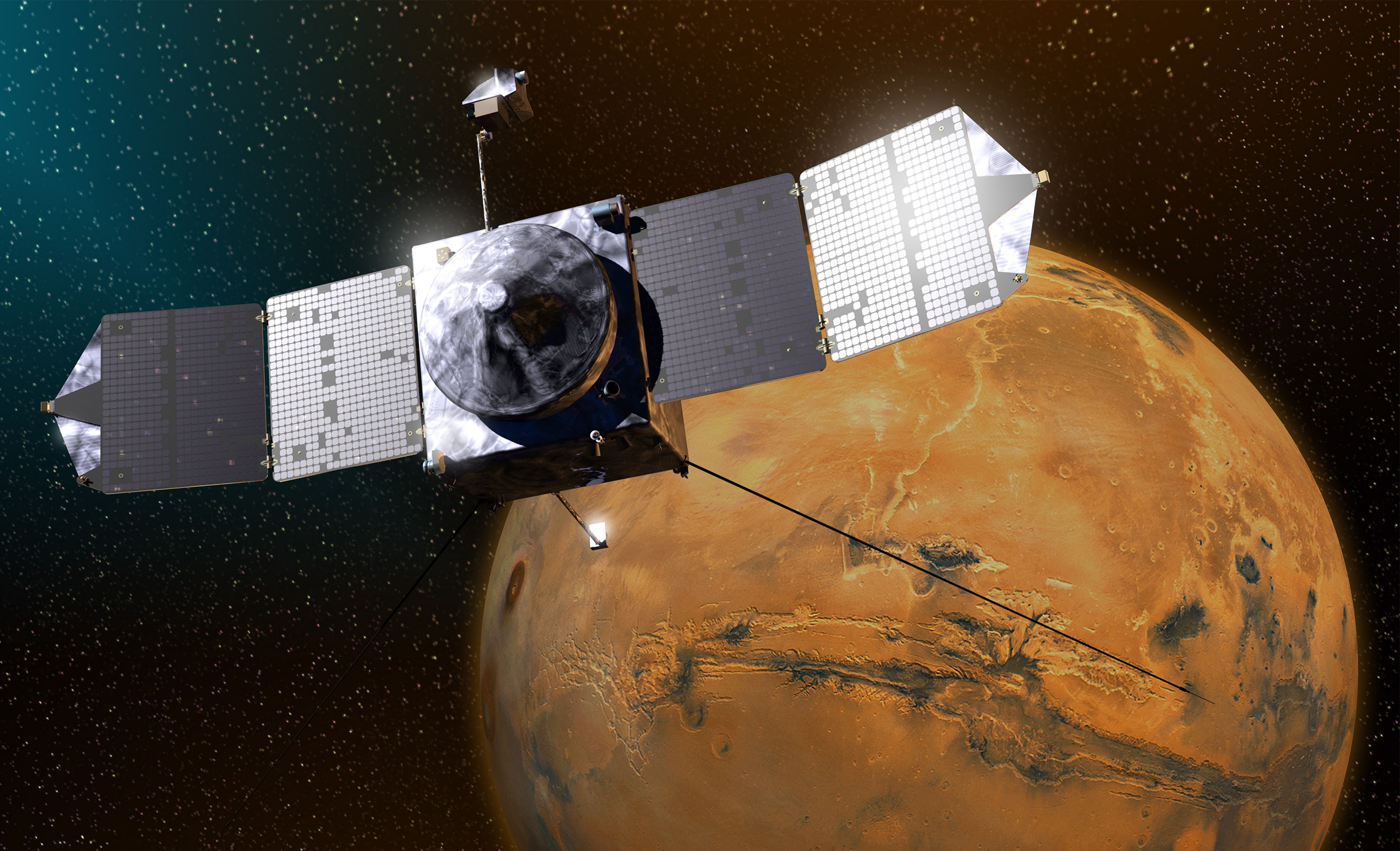
One of the humorous remarks that have been circulating the Internet in recent years regarding the exploration of Mars, is that the Red Planet is the only one to this date to be solely inhabited by robots. With no less than five active spacecraft from the US, Europe and India currently in orbit around our planetary neighbor and two operating US rovers on its surface, Mars can be justifiably considered as a crowded and busy place. Throughout this time, most of the attention by the media has been focused on such milestone, high-profile missions like NASA’s Curiosity rover, whose daredevil-type landing in August 2012 and subsequent incredible imagery of the Martian landscape has wowed scientists and the public alike, as well as India’s first foray into planetary exploration with its highly successful Mars Orbiter Mission, or MOM. Yet, another latecomer in the Mars exploration arena has just passed a major milestone of its own, while quietly conducting important science along the way. Having successfully entered orbit around Mars on September 22, 2014, NASA’s relatively neglected Mars Atmosphere and Volatile EvolutioN Mission, or MAVEN, celebrates exactly one year of studying the Red planet’s atmospheric dynamics in great detail for the first time ever by any robotic spacecraft.
The road to space for every planetary exploration mission is a decades-long process of conceptual studies, careful analysis, planning and implementation and MAVEN could not have been an exception. Even though it was first proposed as a concept to NASA in the early 2000’s, MAVEN actually traces its roots back to the Pioneer-Venus mission which had studied the upper atmosphere of Venus and its interaction with the solar wind in great length back in the late 1970’s and early ’80’s. The need for a similar mission around the Red planet soon arose within the planetary science community, yet several propositions for such a mission that were studied by NASA during the 1980’s, like the Mars Aeronomy Observer and the Earth/Mars Aeronomy Orbiter, ultimately failed to advance beyond the conceptual phase. NASA finally revisited the concept for a dedicated aeronomy mission around the Red planet in 2006, when it issued a request for proposals for its now-discontinued Mars Scout program. As part of that process MAVEN was ultimately downselected in 2008 from a list of 26 competing mission concepts for a launch opportunity in late 2011 that was pushed back to 2013 due to organisational concerns within the agency. Despite these setbacks and having succeded in staying on track and on budget throughout its entire development phase, the $671-million MAVEN spacecraft was eventually launched on top an Atlas V rocket on November 18, 2013 for a 10-month journey towards the Red planet, with the specific goal of tracing the 4.5 billion-year history and evolution of the tenuous Martian atmosphere.
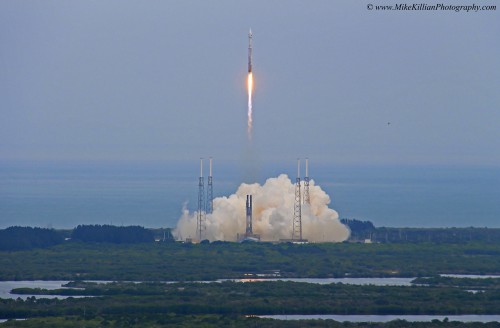
Following in the footsteps of the successful US missions that preceded during the past decade, MAVEN finally entered orbit around Mars on September 22, 2014, after a journey of more than 700 million km across interplanetary space. The timing couldn’t have been better, for the spacecraft’s arrival in the vicinity of Mars coincided with the passage of comet C/2013 A1 Siding Spring, that came as close as 139,500 kilometers of the planet exactly a month later, on October 19. Even though MAVEN was still in the middle of its 6-week commissioning phase during the event and was positioned at the other side of the planet as a precaution, it nevertheless provided scientists with their first-ever views of the effects of a cometary passage and subsequent meteor shower on a planetary atmosphere other than Earth’s. More specifically, the spacecraft’s onboard Imaging Ultraviolet Spectrograph observed an intense ultraviolet emission as comet dust containing ionised iron particles slammed into the upper martian atmosphere, producing what would undoubtedly be a spectacular shooting star show as it would appear from the planet’s surface. In addition, MAVEN’s onboard Neutral Gas and Ion Mass Spectrometer was able to detect eight other different types of metal ions, including sodium and magnesium, providing planetary scientists with their first-ever direct measurements of dust from a comet that had originated from the Oort cloud at the outskirts of the Solar System. “This historic event allowed us to observe the details of this fast-moving Oort Cloud comet in a way never before possible using our existing Mars missions,” says Dr. Jim Green, director of NASA’s Planetary Science Division at the agency’s headquarters in Washington,DC. “Observing the effects on Mars of the comet’s dust slamming into the upper atmosphere makes me very happy that we decided to put our spacecraft on the other side of Mars at the peak of the dust tail passage and out of harm’s way.”
As impressive as the data from the close passage of comet C/2013 A1 Siding Spring were, MAVEN didn’t fail to deliver on its primary mission goals as well during its first year of operations around Mars. Right from the start and within just a few hours after achieving Mars orbital insertion, the spacecraft focused its 8 onboard science instruments on studying the properties of the Martian ionosphere and rarefied upper atmosphere and its interaction with the solar wind. As Mars lacks the type of global magnetic field that protects Earth from the harmful effects of the ultraviolet radiation and coronal mass ejections that are coming from the Sun, the latter hit and ionise the Martian upper atmosphere unimpeded, causing lighter elements like hydrogen, to freely escape into space. It is this process which is believed to be the main cause behind Mars’ atmospheric loss, turning the planet from what it is thought to have been a warm, wet and habitable planet early in its history to the dry and frozen world that is today. The physics of this transition from a potentially habitable Mars to a dead one is one of the biggest mysteries in planetary science today, the answer to which could also help shed light to the question of whether the planet had indeed harbored any kind of life in the past and whether it still does so today.
To that end, MAVEN was designed to study Mars from a highly elliptical polar orbit with an apogee of 6,200 km and a perigee of 150 km, thus ensuring a global coverage of the entire Martian atmosphere at many different altitudes. As part of its mission, the spacecraft was also tasked with executing five ‘deep-dip’ week-long dives throughout its primary mission that would bring it as close as 125 km above the martian surface, the four of which were successfully completed in February, April, July and September of this year.
Overall, the mission’s orbital profile and specialised science payload have helped planetary scientists so far to begin drawing the picture of the mechanics behind Mars’ atmospheric loss and have allowed them to make the first detailed compositional and structural measurements of the planet’s entire atmosphere for the first time. Some of the highlight science results so far, include the detection that solar particles penetrate deeper into the atmosphere of Mars than what was previously thought, all the way down to the lower atmospheric layers. As the atoms in the martian atmosphere are ionised by ultraviolet radiation from the Sun, they begin to ‘feel’ the magnetic field of the solar wind, causing them to slowly follow a trajectory along the solar magnetic field lines away from Mars through a narrow route along the planet’s poles, which makes the atmosphere thinner with time. “MAVEN is observing a polar plume of escaping atmospheric particles,” says Bruce Jakosky, principal investigator for the MAVEN mission, at the University of Colorado. “The amount of material escaping by this route could make it a major player in the loss of gas to space.”
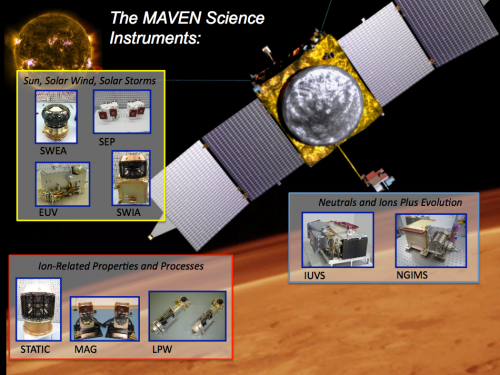
One other important result to have come from the mission this far, has been the discovery that Mars’ auroras are much more widespread in the planet’s atmosphere than what was thought possible. Even though the Mars doesn’t have a global magnetic field, it nevertheless harbors many localised, umbrella-like magnetic field patches, which are though to be the remnants of the global magnetic field that should have encircled the planet early on its history before it turned off. Scientists had previously theorised that auroras on Mars should be localised around these magnetic patches as well. Yet, what MAVEN’s Imaging Ultraviolet Spectrograph found, was that martian auroras were far more widespread, circling the entire planet, while the charged solar particles that caused them were found much deeper in the atmosphere than expected, at an altitude of approximately 100 km above the ground. “The canopies of the patchwork umbrellas are where we expect to find Martian auroras,” says Nick Schneider, member of the MAVEN science team at the University of Colorado and lead of the Imaging Ultraviolet Spectrograph instrument. “But MAVEN is seeing them outside these umbrellas, so this is something new. It really is amazing. Auroras on Mars appear to be more wide-ranging than we ever imagined.”
As an acknowledgment of MAVEN’s excellent performance and return of science results to date, NASA has already decided to extend the mission beyond its primary phase which ends on November, until at least September 2016 when the agency’s next planetary science mission review will take place. This extension will also give scientists the opportunity to further study Mars’ atmosphere in length for the full duration of one Martian year, which is 687 Earth days. “The success of the mission so far is a direct result of the incredibly hard work of everybody who works (and has worked) on MAVEN”, said Jakosky, while commenting on the celebration of the mission’s first year around the Red planet. “This one year at Mars reflects the tremendous efforts over the preceding dozen years. And the mission continues—we still have two months to go in our primary mission, and then we begin our extended mission. We’re obtaining an incredibly rich data set that is on track to answer the questions we originally posed for MAVEN and that will serve the community for a long time to come. I hope everybody is as proud of what we’ve accomplished as I am! And here’s to the next year of exciting observations, analyses, and results!”
One factor that helps to ensure the mission’s longevity, is MAVEN’s secondary role as a communications and relay orbiter for the US rovers Opportunity and Curiosity that are currently active on the surface of Mars, a well as the landers and rovers that are scheduled to arrive on the Red planet within the next few years, like InSight and the Mars 2020 rover. At present, Curiosity and Opportunity use the Mars Odyssey and the Mars Reconnaissance Orbiter, as well as ESA’s Mars Express for communicating with Earth, but these spacecraft are long past beyond their primary missions, having lodged more than a decade in orbit around Mars. Should one or more of them eventually fail, NASA will need to have a functioning replacement in orbit so that communication with present and future missions on the surface stay uninterrupted.
Besides its excellent return on investment as a science mission, it is expected that MAVEN’s productive lifetime around the Red planet in similar vein to its predecessors could well span for more than a decade, further adding to our knowledge of our mystifying and enchanting planetary neighbor.
Video Credit: NASA’s Goddard Space Flight Center
Below are more images of some of the most important science results to have come from the MAVEN mission so far:
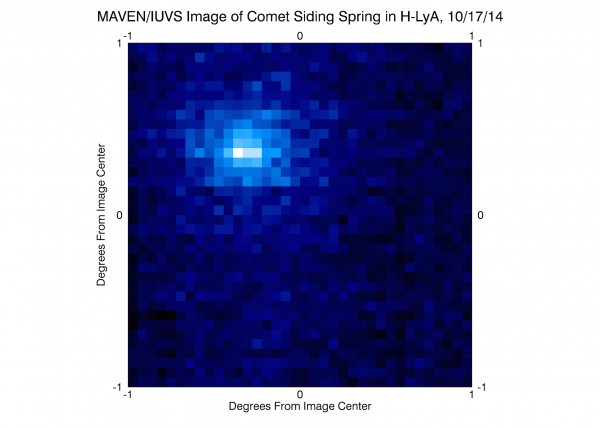
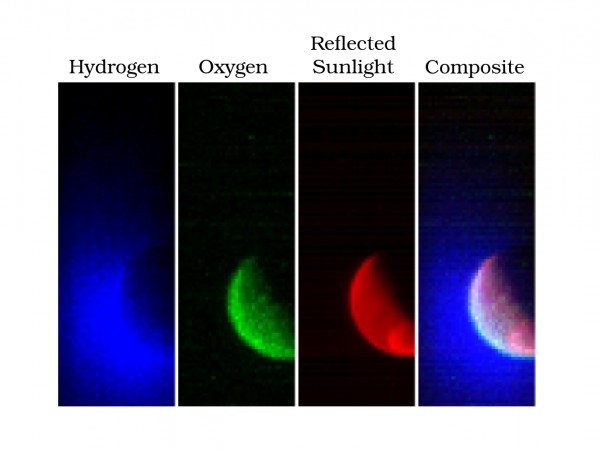
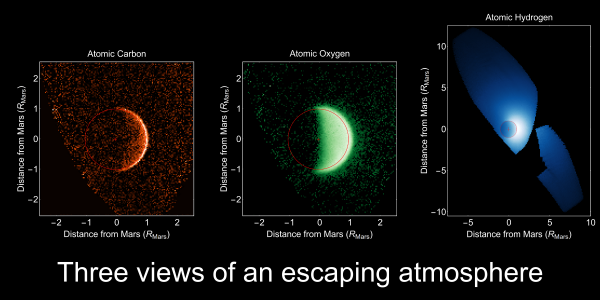
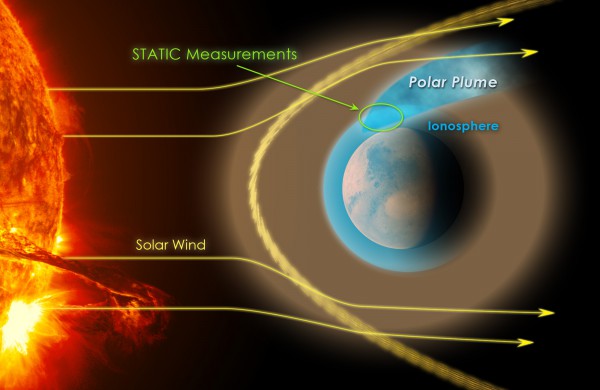
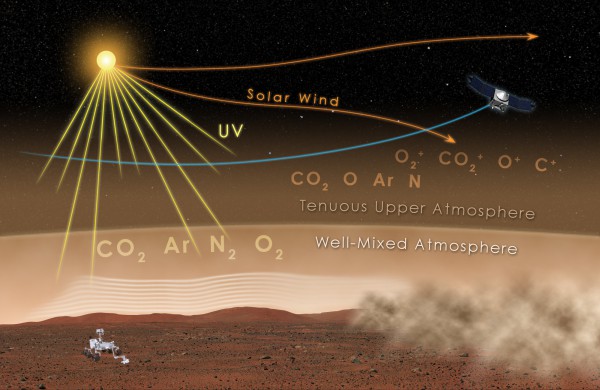
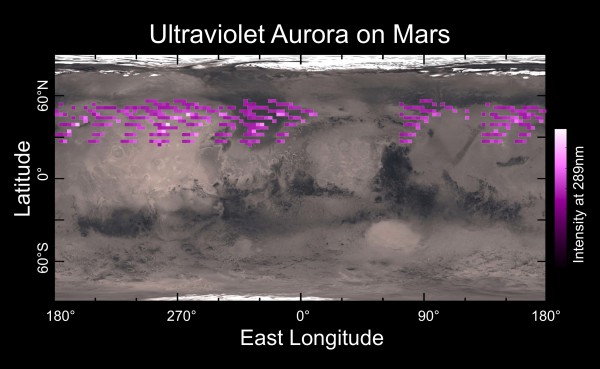
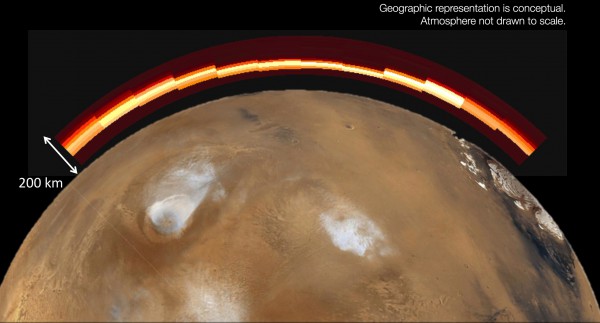
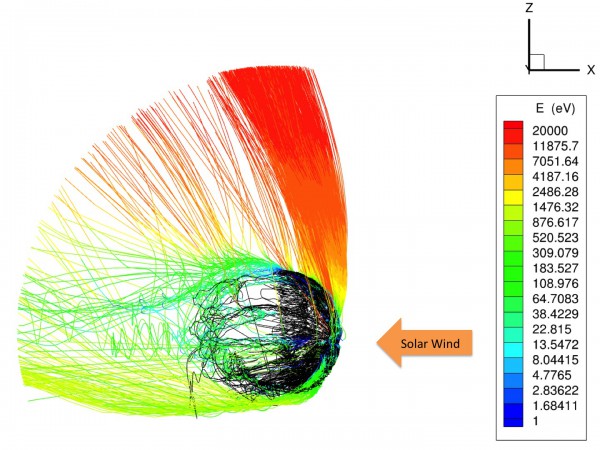
Want to keep up-to-date with all things space? Be sure to “Like” AmericaSpace on Facebook and follow us on Twitter: @AmericaSpace
Missions » MAVEN »



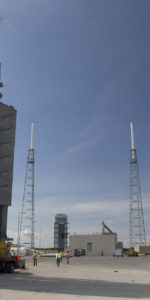
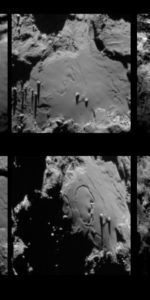
2 Comments
2 Pings & Trackbacks
Pingback:Maven celebrates one year in orbit | Off to the Space Races
Pingback:First Hundred, Next Hundred: ULA Celebrates Centenary, Readies For Challenges Ahead « AmericaSpace